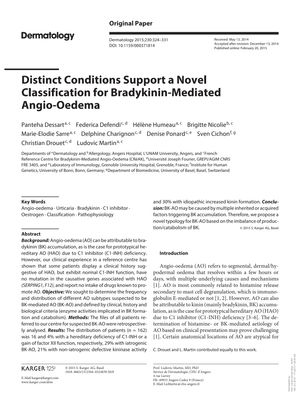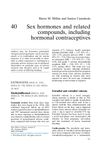Distinct Conditions Support a Novel Classification for Bradykinin-Mediated Angioedema
January 2015
in “
Dermatology
”

TLDR The conclusion suggests a new way to classify bradykinin-mediated angio-oedema based on different causes and its possible link with urticaria, which could improve diagnosis and treatment.
The study analyzed the medical files of 162 patients with suspected bradykinin-mediated angio-oedema (BK-AO) and proposed a novel classification based on the imbalance of bradykinin production and catabolism. It found that BK-AO can be caused by various inherited or acquired conditions, with 16% of patients having hereditary C1 inhibitor deficiency, 4% with a gain of function in factor XII, 29% with iatrogenic BK-AO, 21% with non-iatrogenic defective kininase activity, and 30% with idiopathic increased kinin formation. The study also reported that BK-AO may co-occur with urticaria, suggesting a shared pathogenesis and challenging the notion that the absence of urticaria is a central feature of BK-AO. The findings indicate the need for further research into the genetic and enzymatic factors contributing to BK-AO and its classification, which could impact the diagnosis and treatment of patients.




